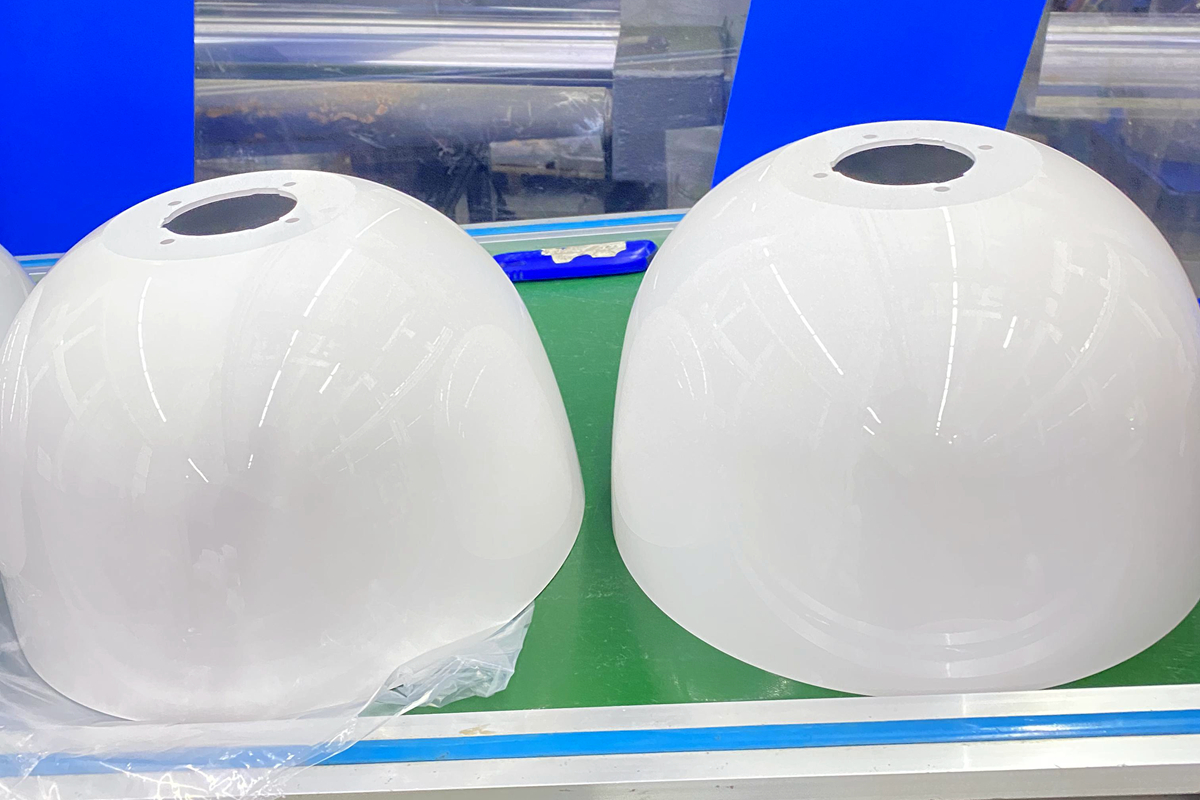UV Coating: Protecting Parts with High-Performance Finishes
Introduction
UV coating is a high-efficiency surface finishing process that provides outstanding protection and aesthetic enhancement for 3D printed parts. UV coatings deliver hard, durable, and glossy finishes that resist scratches, chemical exposure, and environmental degradation by utilizing ultraviolet light to cure a liquid coating rapidly. Widely used across industries such as consumer electronics, automotive, and medical devices, UV coatings ensure parts achieve both exceptional surface quality and robust functional performance, adhering to industry standards like ASTM D3023 and ISO 2813.
This blog will explore how UV coating works, its benefits for 3D printed components, suitable materials, typical applications, and comparisons with other protective surface treatments. This insight will help guide the best surface finishing strategy for enhancing 3D printed parts.
How UV Coating Works and Quality Assessment Criteria
UV coating involves applying a specially formulated liquid resin onto the surface of a 3D printed part, followed by exposure to ultraviolet light. The UV energy triggers a photochemical reaction that instantly hardens and bonds the coating to the substrate, creating a resilient, high-gloss or matte finish.
Key Quality Assessment Criteria:
Hardness and Scratch Resistance: Assessed using pencil hardness tests (ASTM D3363), UV coatings typically achieve hardness ratings between 3H and 9H, offering excellent scratch resistance.
Gloss Level: Measured per ASTM D523 or ISO 2813 standards, UV coatings deliver gloss values exceeding 85 GU at 60°, ensuring brilliant, uniform finishes.
Chemical Resistance: Tested according to ASTM D1308, UV-coated parts resist damage from solvents, acids, and cleaning agents, maintaining surface integrity under harsh conditions.
Adhesion Strength: Verified through crosshatch adhesion tests (ASTM D3359), UV coatings exhibit strong bonding to various materials, ensuring long-term performance.
UV Coating Process Flow and Key Parameter Control
The UV coating process involves precisely controlled steps:
Surface Preparation: Parts are cleaned to remove oils, dust, or contaminants. Surface roughness (Ra <0.8 µm) is targeted for optimal adhesion.
Coating Application: UV-curable resin is applied by spray, roller, or curtain coating methods, depending on part geometry and desired finish.
UV Curing: Parts pass under UV lamps (wavelengths typically 200–400 nm) at controlled intensities and exposure times, ensuring complete curing without thermal distortion.
Post-Treatment Inspection: Final inspection assesses coating uniformity, adhesion, gloss level, and resistance to mechanical and chemical stresses.
Key parameters such as coating thickness (typically 5–25 µm), UV intensity, exposure duration, and line speed are tightly regulated to achieve optimal results.
Applicable Materials and Scenarios
Material Type | Common Grades | Applications | Industries |
|---|---|---|---|
Consumer electronics casings, automotive interiors | Consumer Electronics, Automotive | ||
Prototypes, decorative parts | Prototyping, Medical Devices | ||
Lightweight structural parts, enclosures | Automotive, Aerospace | ||
Medical devices, industrial housings | Medical, Industrial |
UV coating is particularly suitable for parts requiring a flawless aesthetic appearance and enhanced durability, often in applications where visual quality and resistance to daily wear are critical.
Advantages and Limitations of UV Coating for 3D Printed Parts
Advantages:
Rapid Curing and Processing: UV coatings cure within seconds, enabling high-throughput manufacturing without prolonged drying times.
High Aesthetic Quality: Provides high-gloss or controlled matte finishes with excellent uniformity and color depth.
Excellent Scratch and Chemical Resistance: Enhances surface hardness, protecting parts from abrasion, chemicals, and UV light degradation.
Environmentally Friendly: UV coatings are solvent-free or low-VOC (volatile organic compound), making them eco-friendly compared to traditional liquid coatings.
Limitations:
Surface Preparation Sensitivity: Requires meticulous cleaning and surface preparation to ensure strong adhesion.
Limited Thickness Control: Thick coatings (>25 µm) may lead to incomplete curing or cracking if not properly controlled.
Material Compatibility: Most effective on plastics and metals; less suited for flexible materials like TPU or highly porous surfaces without special primers.
UV Coating vs. Other Surface Treatment Processes
Surface Treatment | Description | Curing Speed | Hardness | Gloss Level | Typical Applications |
|---|---|---|---|---|---|
UV-cured protective resin finish | Extremely Fast (seconds) | High (3H–9H) | High (>85 GU at 60°) | Electronics, Automotive | |
Electrostatic dry powder finish | Moderate (oven baked) | High (up to 5H) | Variable (matte to gloss) | Automotive, Industrial | |
Liquid applied paint finish | Slow (air-dried or baked) | Moderate (2H–3H) | Customizable | Consumer, Decorative Parts | |
Electrochemical oxide finish for aluminum | N/A (no drying) | High (400–600 HV) | Matte or Satin | Aerospace, Electronics |
Application Cases for UV-Coated 3D Printed Parts
Consumer Electronics: UV-coated ABS and PC smartphone housings exhibit scratch resistance improvements of up to 40%, maintaining premium appearance under daily use.
Automotive Interior Components: UV-coated dashboard trims and control panels resist UV aging and maintain aesthetic appeal, even under prolonged sun exposure.
Medical Devices: UV coatings applied to 3D printed surgical guides and housings ensure easy sterilization and prolonged chemical resistance.
Prototyping and Decorative Parts: UV coatings deliver high-gloss, showroom-quality finishes for visual prototypes, enhancing client presentations and product validation.
FAQs
What is UV coating, and how does it protect 3D printed parts?
Which materials are best suited for UV coating in 3D printing?
How does UV coating compare with powder coating and painting?
Can UV coating be applied to flexible 3D printed materials?
What industries benefit most from UV-coated 3D printed parts?

